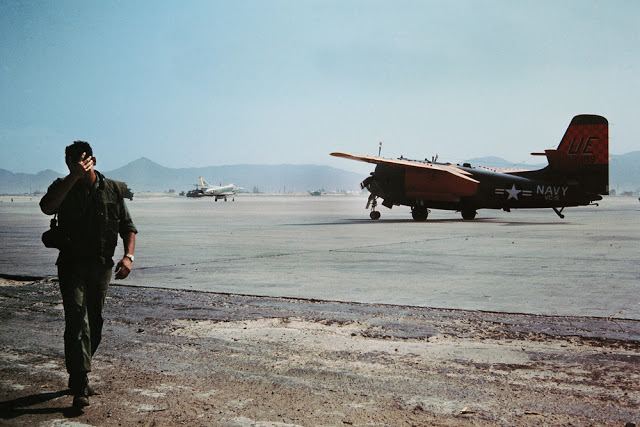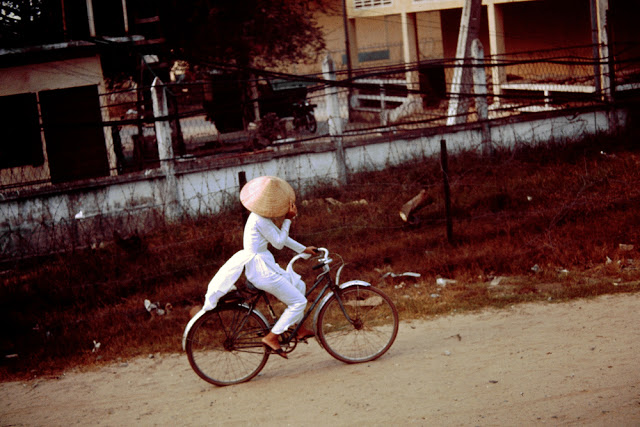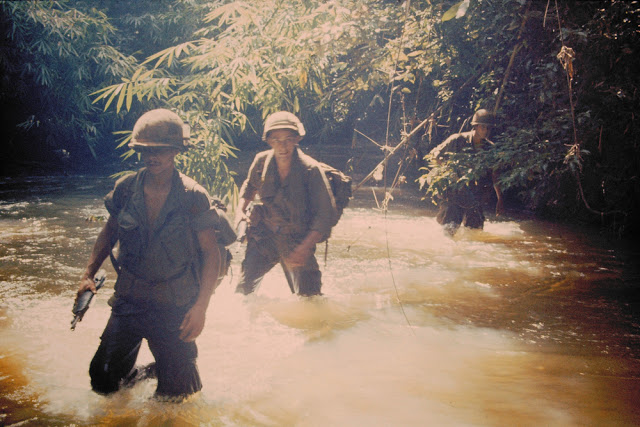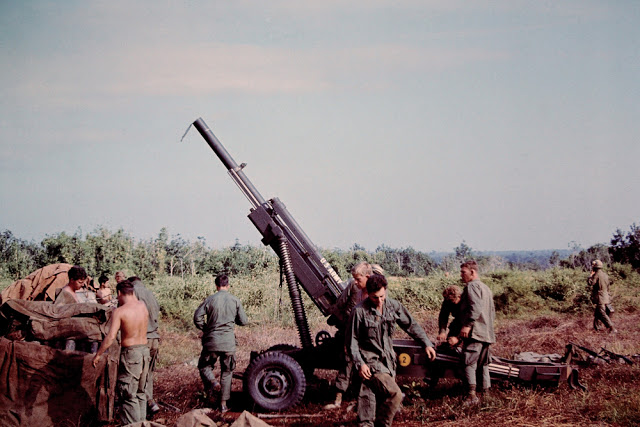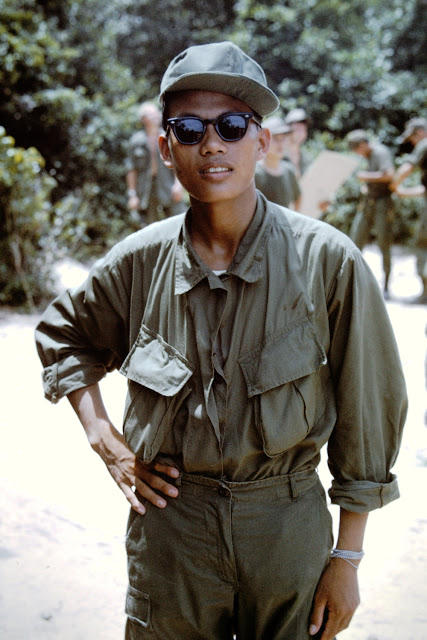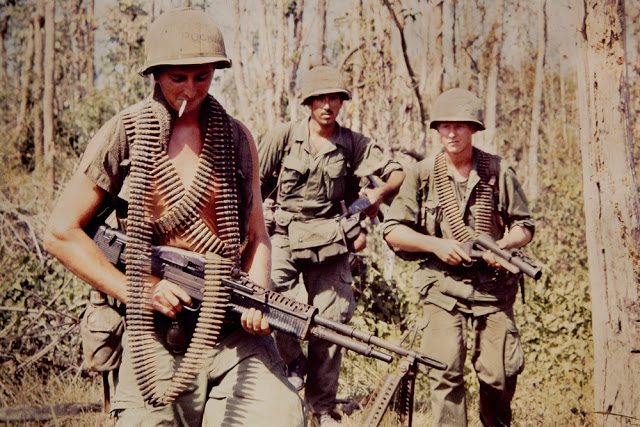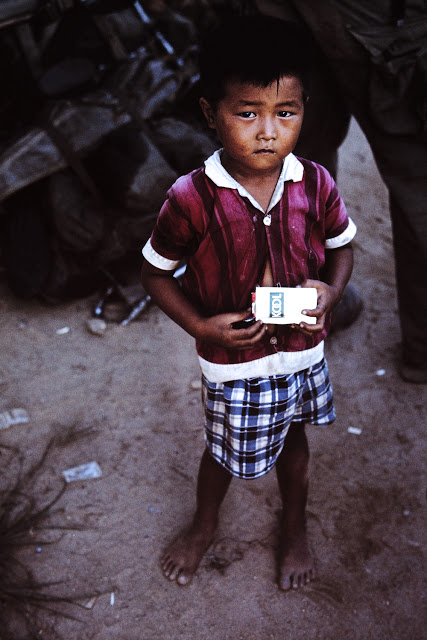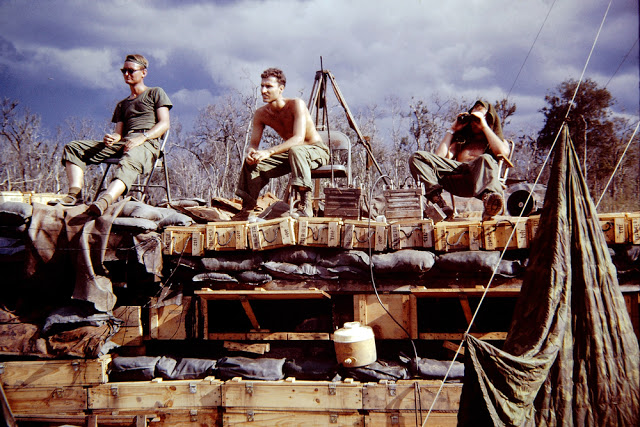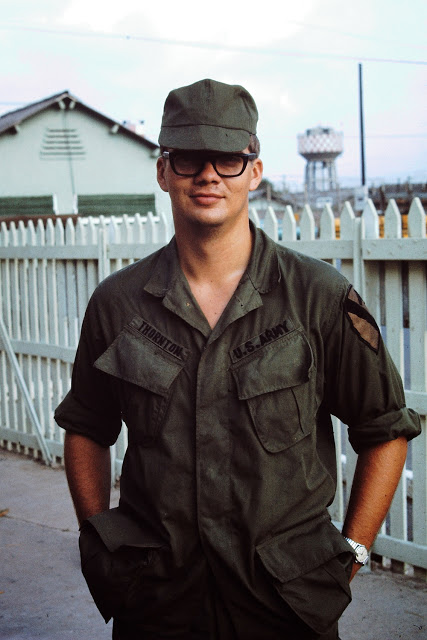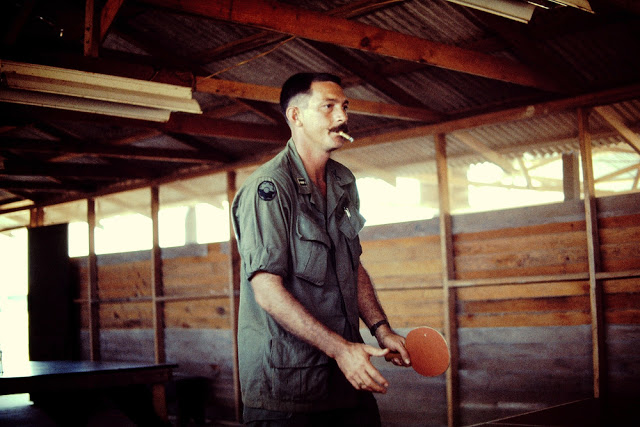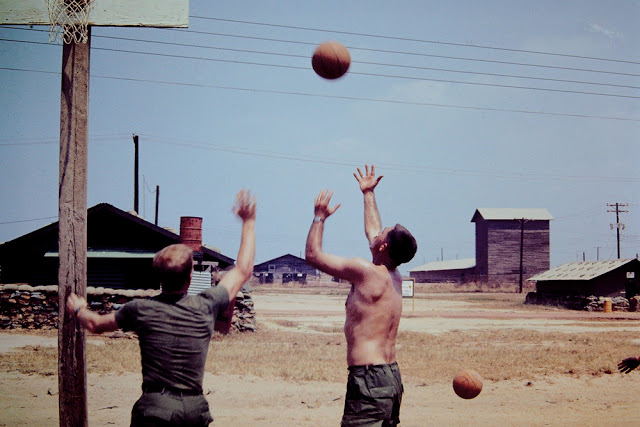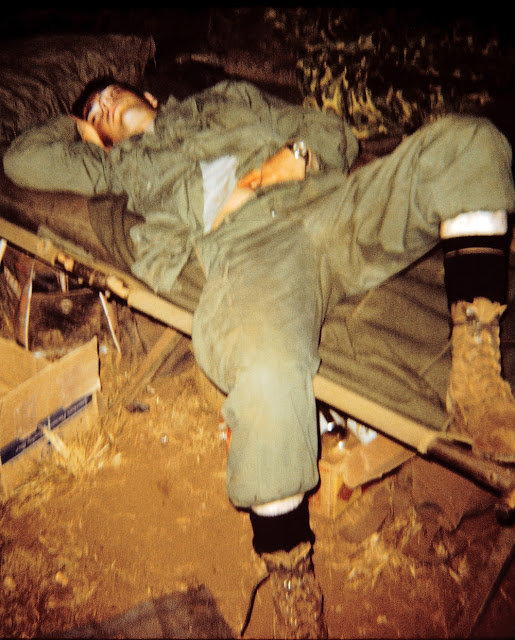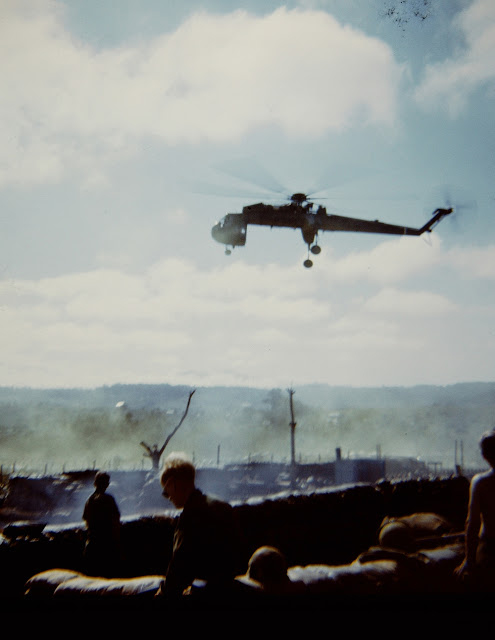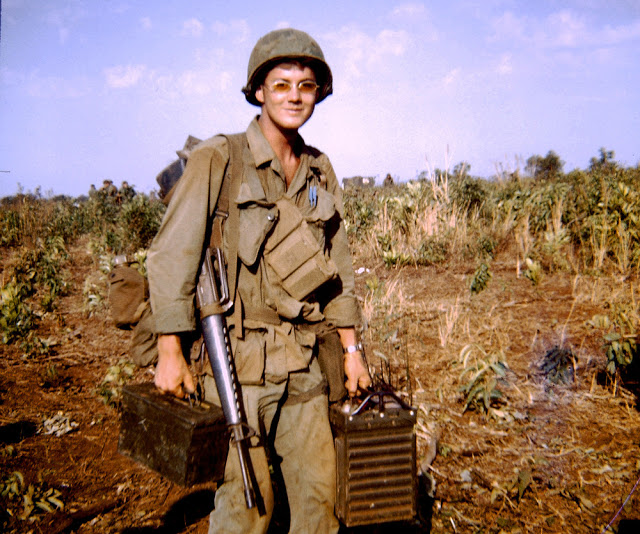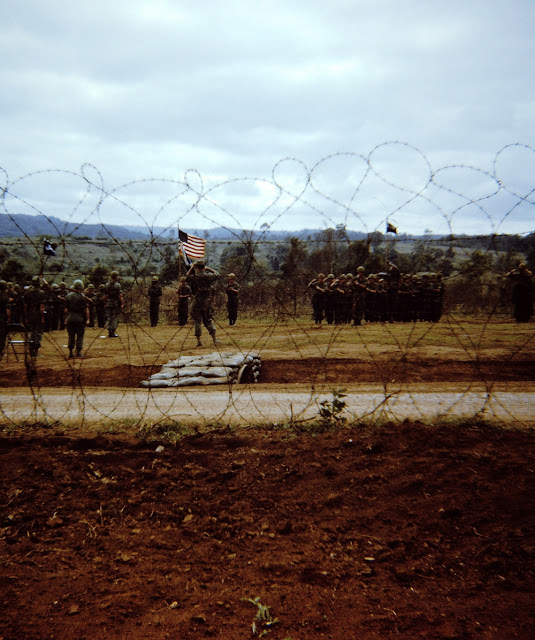Subscribe to get access
Read more of this content when you subscribe today.

The Vietnam Slide Project was created by Kendra Rennick, a photo editor in New York who began collecting photo slides after a close friend lost her father, a Vietnam veteran. Her friend found a box of slides that her father had taken while in Vietnam, and from there Rennick has continued to collect photographs that Vietnam veterans took during their tours of duty.
“I am interested in a wide range of roles they had overseas and their images,” she said. “They do not need to be professional photographs. Snap shots and candid moments are almost more interesting to me.”
Her goal for the project is to curate a collection of imagery shot by servicemen and women who served in Vietnam. These images are the ones the photojournalists missed, the ones that never made it to the Associated Press. “I am most interested in photo slides for their aesthetic, as well as slides’ original intention,” she explained. The idea that slides are shot with the hopes of being shown to a group of people and projected on a wall interests me. Most people have no way of viewing their slides so they usually sit in a box untouched or viewed.”
The Vietnam War (also known by other names) was a conflict in Vietnam, Laos, and Cambodia from 1 November 1955 to the fall of Saigon on 30 April 1975.[17] It was the second of the Indochina Wars and was officially fought between North Vietnam and South Vietnam. North Vietnam was supported by the Soviet Union, China, and other communist allies; South Vietnam was supported by the United States and other anti-communist allies. The war is widely considered to be a Cold War-era proxy war. It lasted almost 20 years, with direct U.S. involvement ending in 1973. The conflict also spilled over into neighboring states, exacerbating the Laotian Civil War and the Cambodian Civil War, which ended with all three countries becoming communist states by 1975.
The conflict emerged from the First Indochina War between the French colonial government and a left-wing revolutionary movement, the Viet Minh. After the French military withdrawal from Indochina in 1954, the U.S. assumed financial and military support for the South Vietnamese state. The Vi?t C?ng (VC), a South Vietnamese common front under the direction of North Vietnam, initiated a guerrilla war in the south. North Vietnam had also invaded Laos in 1958 in support of insurgents, establishing the Ho Chi Minh Trail to supply and reinforce the Vi?t C?ng. By 1963, the North Vietnamese had sent 40,000 soldiers to fight in the south. U.S. involvement escalated under President John F. Kennedy, from just under a thousand military advisors in 1959 to 23,000 in 1964.
In the Gulf of Tonkin incident in August 1964, a U.S. destroyer clashed with North Vietnamese fast attack craft. In response, the U.S. Congress passed the Gulf of Tonkin Resolution and gave President Lyndon B. Johnson broad authority to increase the U.S. military presence in Vietnam, without a formal declaration of war. Johnson ordered the deployment of combat units for the first time and increased troop levels to 184,000. The People’s Army of Vietnam (PAVN), also known as the North Vietnamese Army (NVA) engaged in more conventional warfare with U.S. and South Vietnamese forces (Army of the Republic of Vietnam (ARVN)). Despite little progress, the U.S. continued a significant build-up of forces. U.S. and South Vietnam forces relied on air superiority and overwhelming firepower to conduct search and destroy operations, involving ground forces, artillery, and airstrikes. The U.S. also conducted a large-scale strategic bombing campaign against North Vietnam.
The communist Tet Offensive throughout 1968 caused U.S. domestic support for the war to fade. The VC sustained heavy losses during the Offensive and subsequent U.S.-ARVN operations, and by the end of the year, the VC insurgents held almost no territory in South Vietnam. In 1969, North Vietnam declared a Provisional Revolutionary Government (the PRG) in the south to give the reduced VC a more international stature, but from then on, they were sidelined as PAVN forces began more conventional combined arms warfare. Operations crossed national borders, and the U.S. bombed North Vietnamese supply routes in Laos and Cambodia beginning in 1964 and 1969, respectively. The deposing of the Cambodian monarch, Norodom Sihanouk, resulted in a PAVN invasion of the country at the request of the Khmer Rouge, escalating the Cambodian Civil War and resulting in a U.S.-ARVN counter-invasion.
In 1969, following the election of U.S. President Richard Nixon, a policy of “Vietnamization” began, which saw the conflict fought by an expanded ARVN, with U.S. forces sidelined and increasingly demoralized by domestic opposition and reduced recruitment. U.S. ground forces had largely withdrawn by early 1972 and their operations were limited to air support, artillery support, advisors, and materiel shipments. The ARVN, with U.S. support, stopped a large PAVN offensive during the Easter Offensive of 1972. The offensive failed to subdue South Vietnam, but the ARVN itself failed to recapture all lost territory, leaving its military situation difficult. The Paris Peace Accords of January 1973 saw all U.S. forces withdrawn; the Peace Accords were broken almost immediately, and fighting continued for two more years. Phnom Penh fell to the Khmer Rouge on 17 April 1975, while the 1975 Spring Offensive saw the Fall of Saigon to the PAVN on 30 April; this marked the end of the war, and North and South Vietnam were reunified the following year.
The war exacted an enormous human cost: estimates of the number of Vietnamese soldiers and civilians killed range from 966,000 to 3 million. Some 275,000–310,000 Cambodians, 20,000–62,000 Laotians, and 58,220 U.S. service members also died in the conflict, and a further 1,626 remain missing in action.
Following the end of the war, the Sino-Soviet split re-emerged and the Third Indochina War began. The end of the Vietnam War would precipitate the Vietnamese boat people and the larger Indochina refugee crisis, which saw millions of refugees leave Indochina, an estimated 250,000 of whom perished at sea. Conflict between the unified Vietnam and the Khmer Rouge began almost immediately with a series of border raids, eventually escalating into the Cambodian–Vietnamese War. Chinese forces directly invaded Vietnam in the 1979 Sino-Vietnamese War, with subsequent border conflicts lasting until 1991. Communist Vietnam fought insurgencies in Vietnam, Laos, and Cambodia. Within the U.S., the war gave rise to what was referred to as Vietnam Syndrome, a public aversion to American overseas military involvements, which together with the Watergate scandal contributed to the crisis of confidence that affected America throughout the 1970s.

